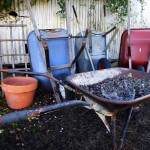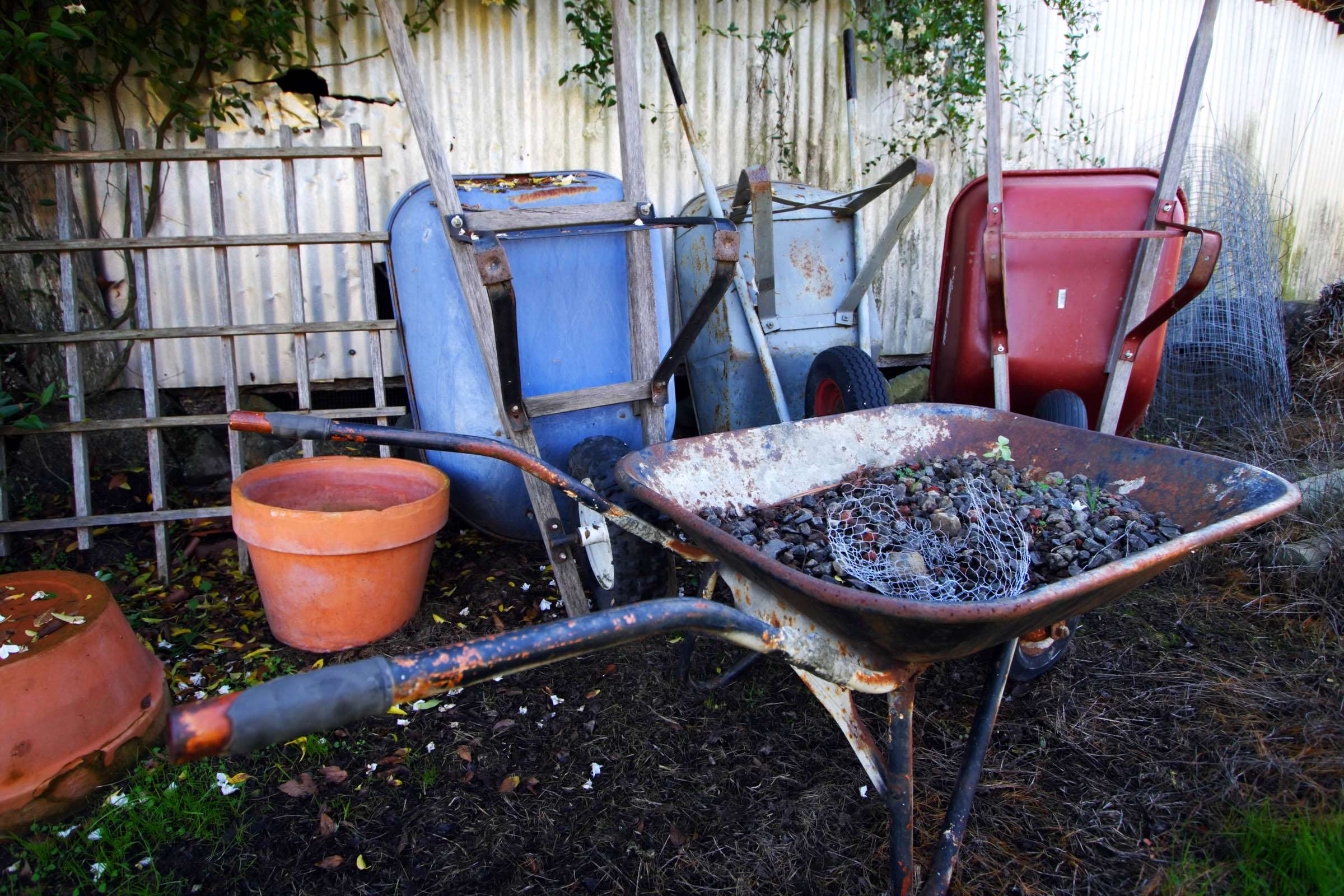
The first thing you’ll need to do is look at your current compost bin to see what, if any, materials you will be starting with. If you added raked leaves last fall you will most likely find that they have broken down substantially. Take stock in what you see and smell. Is your compost heap wet or dry? Is it made of mostly large or small bits, and how does it smell? Yes, smell. The odor of your compost can tell you a lot about what you’re dealing with.
One of the first things you’ll want to do is break down any large bulky pieces of plant material, especially the woody stems and branches. Basically, the more surface area your compost has, the faster organic material will break down.
Once everything is broken down into nice, small, uniform pieces you’ll next need to determine how wet your compost is. Many people find in spring they are left with a lot of dried leaves from autumn but they fall short in the humus department, which is the dark, moist organic matter that helps maintain the moisture level in your compost heap. You can easily add moisture to your spring heap by shredding cardboard which is a material that can hold quite a bit of water. You may also want to consider adding other humectants such as decomposed straw or well-aged manure.
Now that you have ensured a nice moist atmosphere, it’s time to add new material to your heap. Quick spring cleanup of your yard should yield some nice organic matter such as dead grass and leaves. Your first mowing will also give you some new green matter to add. If incorporated well, grass clippings add a nice amount of nitrogen to your compost heap.
You can find more green materials in your kitchen. These will be things like orange and banana peels, leftover lettuce, etc. These materials will nourish your pile and also help keep it moist. Be sure when adding these to spread them out evenly and combine well.
When everything is mixed well it is time to water your heap. You needn’t soak everything, simply use a garden watering can to add a little moisture to your mix. How wet should your heap be ideally? Many gardeners compare a healthy compost heap to a slightly damp sponge.
The next thing to discuss is a topic that makes some gardeners squirmy – worms! Red worms are a great addition to any compost heap simply because they speed up the decomposing process. A note – worms should only be used in cold heaps, obviously, not hot as the worms will eventually die an unpleasant death.
Once your compost heap is back up to speed, the trick is to keep adding new organic material and maintain the moisture levels. By doing so you will have nutrient-rich compost for all of your flower beds and vegetable gardens this spring and summer.

About the Author
James is your friendly neighborhood content writer here at the Green Living Blog. With a passion for all things sustainable, he’s your go-to guru for everything eco-friendly. Armed with a treasure trove of wisdom about sustainable living, recycling, and environmentally conscious practices, James is on a mission. He’s here to make sure you not only protect your family but also keep Mother Earth smiling. 😊🌎 When he’s not busy sharing eco-friendly insights, James can often be found teaching his cat that compost bins make the purr-fect hideaway. 🐱♻️ Join James on his quest to uncover the secrets of defeating wasteful habits while leaving the lightest footprint on our precious planet’s ecosystem.

